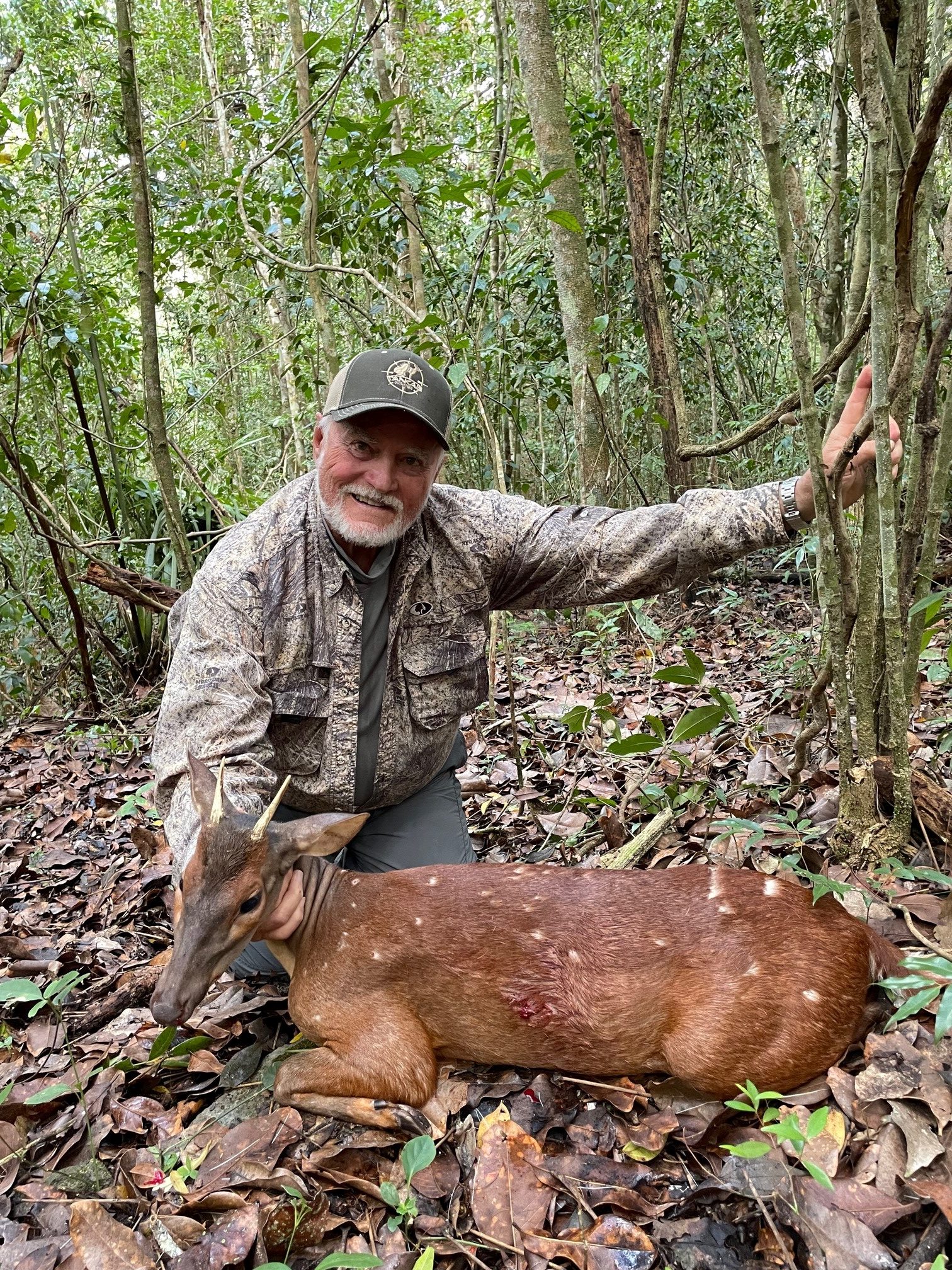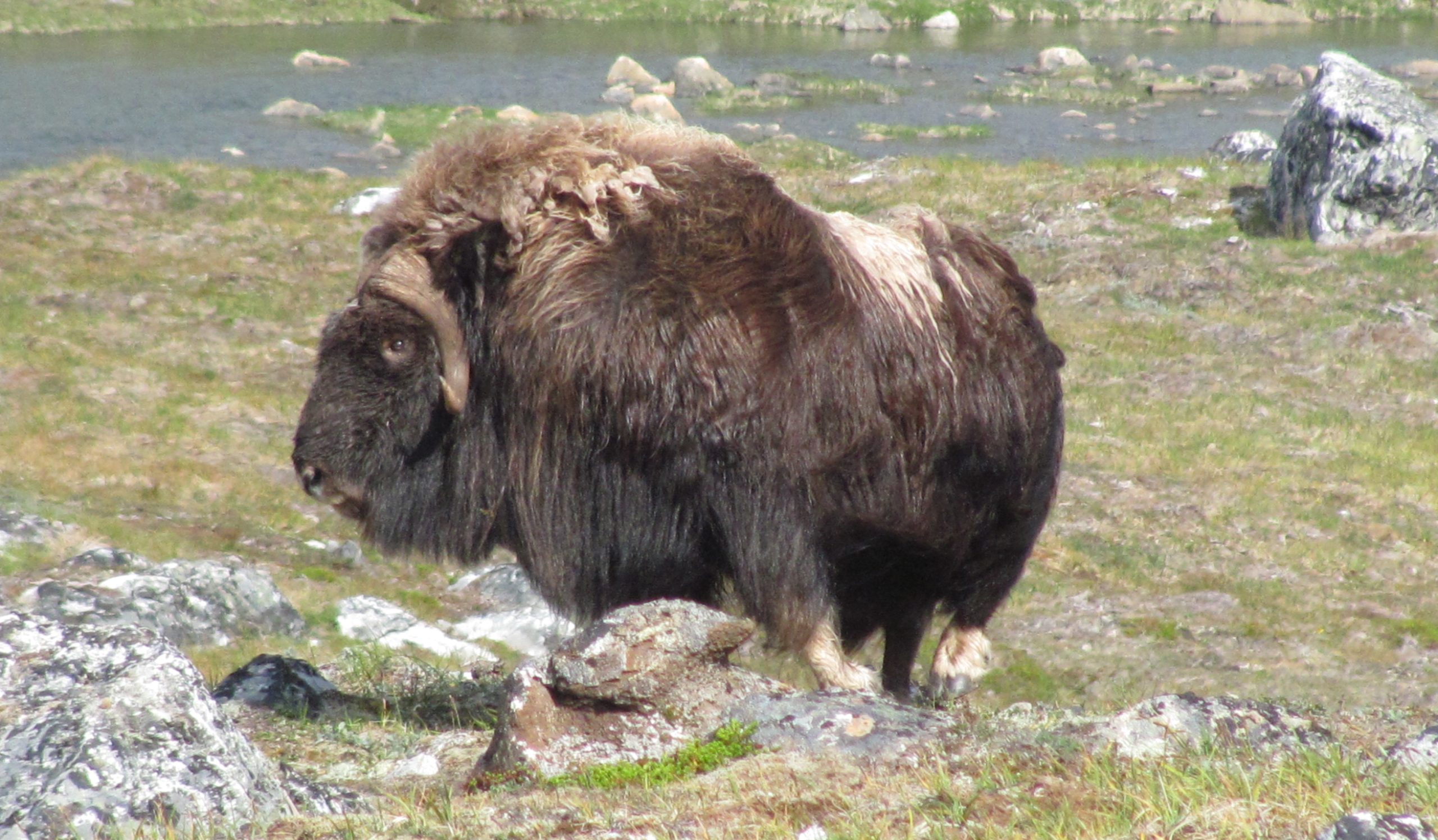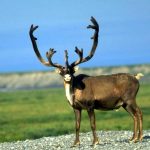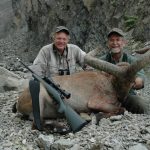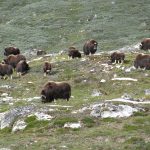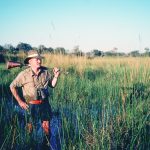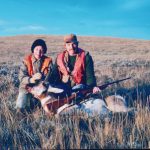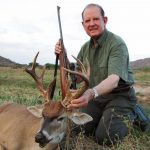Or are there actually 40 species of big game on our continent? It all depends on which list you use.
Photo above: A massive old muskox bull. Photographed in Greenland, this is (of course) a Greenland muskox. Canada has both Greenland and barren ground varieties, visually indistinguishable, but the barren ground muskoxen get bigger.
In the early 1950s, about the time I was born, New York ad executive Grancel Fitz became the first person to take all known varieties of North American big game. Quite a feat, especially in Fitz’s day, when air travel was in its infancy.
Who knows what fuels our dreams when we’re young? I was young when I read about this, thought it was cool, and decided it was something I should accomplish. In the 1980s I was making good progress; I dared believe I might pull it off by the time I was forty.
Not even close. Polar bear hunting was coming and going, and I didn’t have a desert bighorn. I was fifty, just back from the Persian Gulf, when I ponied up a year’s worth of combat pay to hunt a desert sheep in Sonora. That left the polar bear, still open in Canada’s Arctic, but with importation getting iffier. I was in my mid-sixties when I finally choked it up and shot a beautiful white bear, completing a half-century quest. If anyone cares, my polar bear is life-size mounted in the conference room of the Leupold distributor in western Canada. I need to visit him.
Today we reckon at least twenty-nine varieties of North American big game. Grancel Fitz, instrumental in developing Boone and Crockett’s measuring system, worked off a different list than we do now. In his day, jaguar hunting was open in Mexico, as were both Atlantic and Pacific walrus hunting. The Central Canada barren ground caribou category did not exist, nor did we recognize Sitka blacktail or the then-protected tule elk.
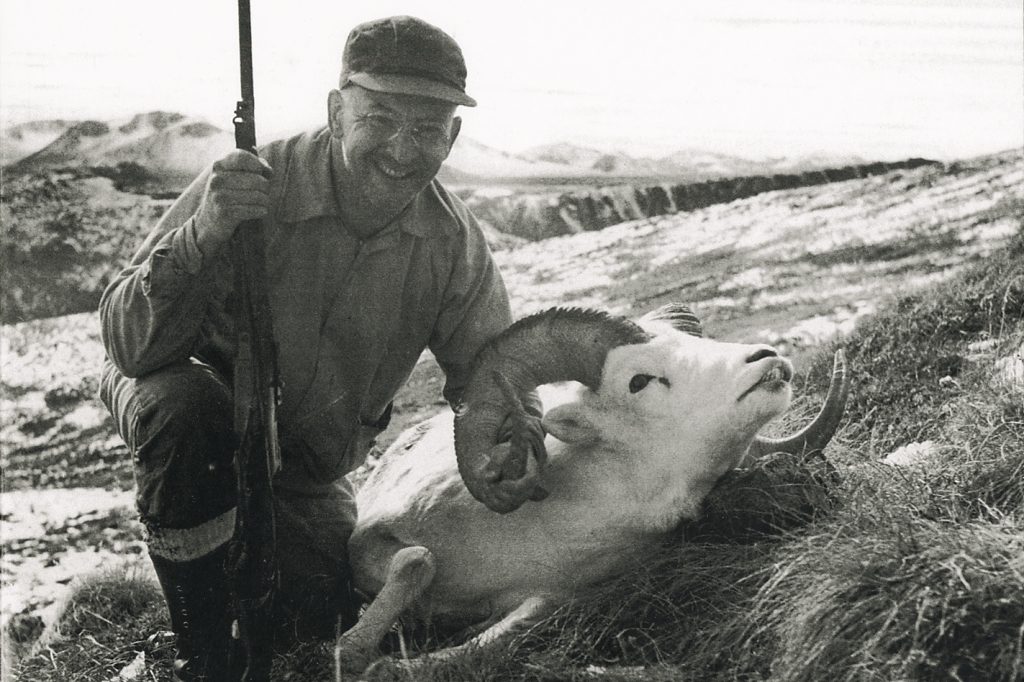
So, the “complete” list of North American big game has changed. Delete this, add that, but during my lifetime North American big game has been resilient, a testament to our North American Model of wildlife conservation, largely instituted by Theodore Roosevelt during his presidency, and initiated by he and his friends when they founded the Boone and Crockett Club in 1888.
We all know northern Quebec’s great caribou herds have crashed, with nonresident caribou hunting now closed. I recently saw a report that suggested Quebec-Labrador caribou hunting might be closed for fifty years.
Because of that caribou, this is one of few times in my life when hunting all of the North American big game species has not been a possible dream. The first time was when Mexico closed jaguar hunting. Importing a legally-taken jaguar into the US has not been possible since 1971, but hunting for them continued in Mexico for a few more years. I remember reading my colleague Jon Sundra’s story, “Last Cat from Campeche.” I’ve even seen his cat, mounted in a mutual friend’s house in Mexico (for the same reason my polar bear remains in Canada).
Jaguars are increasing in Mexico and reoccupying their former range. From a pure management standpoint, funds from a handful of hunting permits could do much for conservation. But the jaguar is such an iconic and politicized animal that I doubt there will be another legally taken North American jaguar.
Sport hunting for Pacific walrus in Alaska has been closed since 1979 and seem unlikely to open again, despite a population exceeding 200,000. The Atlantic walrus is somewhat smaller in both body and tusk. Its numbers are also smaller, but stable, and limited hunting has been conducted in Canada’s Nunavut for some years.
Over the last forty years, we have essentially removed the jaguar and Pacific walrus from our list of huntable North American big-game animals. Now must we do the same with the Quebec-Labrador caribou?
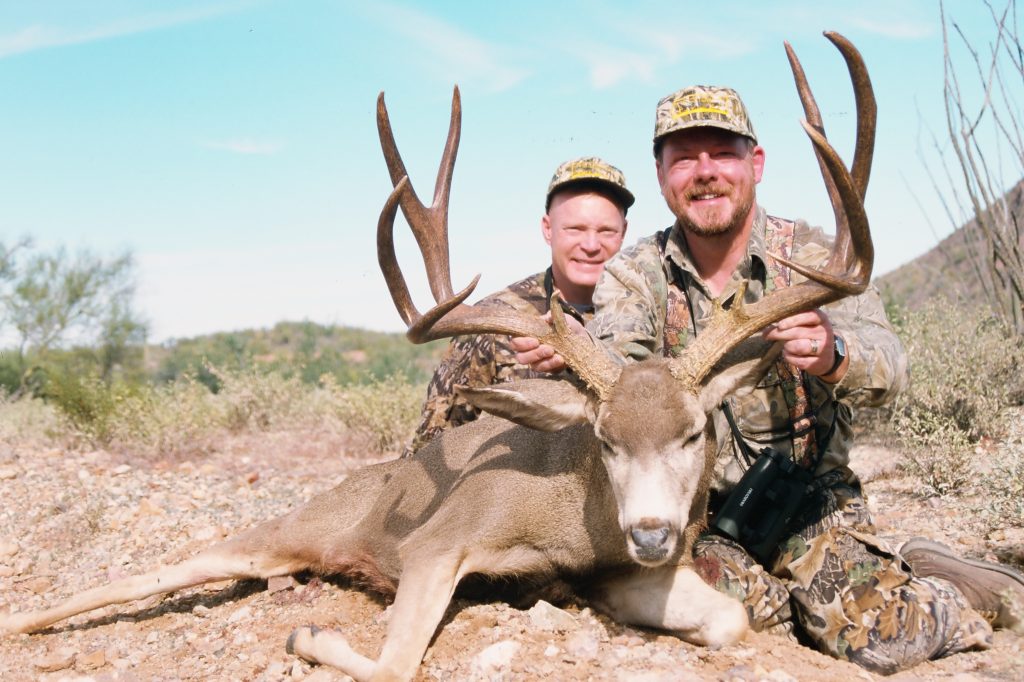
Since the days of Grancel Fitz, twenty-nine has been the traditional magic number for North American big game. Within their world hunting awards system, Safari Club International (SCI) offers recognition for the “North American 29.” The Grand Slam Club/Ovis (GSC/O) “Super Slam” award is presented for taking twenty-nine North American big-game animals. So, for those of us who like to organize our dreams, there is more than one list to choose from.
The Super Slam list is traditional: Four bears (black, grizzly, Alaska brown, and polar); five deer (whitetail, Coues, mule, Sitka and Columbian blacktail); three elk (Rocky Mountain, Roosevelt, tule); five caribou (mountain, woodland, Quebec-Labrador, barren ground, Central Canada barren ground); three moose (Canada, Alaska-Yukon, Shiras); four sheep (Dall, Stone or Fannin, Rocky Mountain or California bighorn, desert bighorn). Plus: cougar, bison, muskox, mountain goat, and pronghorn.
So far, so good: that’s twenty-nine. There are also four auxiliaries: jaguar (if taken before 1972); Pacific walrus (taken before 1980); Atlantic walrus; and wolf. Wolves have long been hunted as big game (with seasons and licenses) in Alaska and various Canadian provinces, and they now are hunted in several Western states. The wolf is a problem creature in multiple ways, but in this case it messes up the magic number. Interestingly, in their Super Slam, GSC/O solves two problems with the wolf: it may be substituted for the now unavailable Quebec-Labrador caribou.
SCI’s “North American 29” list includes all the same animals, but adds eleven more, for a total of forty possibilities. Any twenty-nine within this list (including at least three sheep) qualify for the award. SCI’s additional animals include jaguar (darted or pre-1972), both walruses, and wolf; they also add Fannin (a natural hybrid between Dall and Stone) as a fifth sheep. SCI also adds several subspecies they track in their record book. These include: continental (inland) and coastal (Pacific) black bear; both eastern and western Canada moose; Arctic Islands caribou; desert and Tiburon Island mule deer; and alligator.
The two approaches show that it’s not a simple subject, complicated over time by more knowledge, hunting closures, and new opportunities. Maybe it’s a good thing that no such list can ever be quite perfect. Traditionally, we have always separated the Coues whitetail, based on a taxonomic error that considered it a full separate species. The Coues deer is just one of thirty-eight recognized whitetail subspecies, and twenty-nine of them occur above the Panama Canal. I love my whitetail hunting, but I’m glad I don’t feel compelled to hunt a couple dozen varieties! There are also two distinct muskoxen, Greenland and barren ground; and two bison: plains bison and the gigantic wood bison. All offer hunting opportunities, but we rarely separate them.
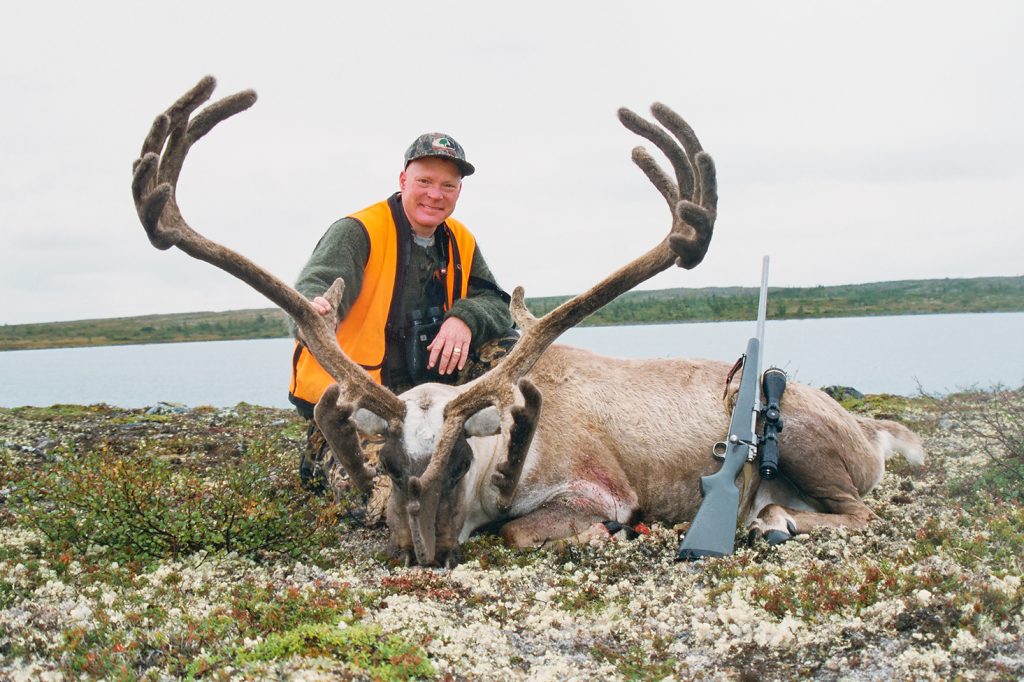
There is now yet another list, or new challenge. GSC/O has ascending levels for mountain hunters: Super 20, 30, even 40, for sheep and goats, but the Super Slam was North America’s pinnacle. My old friend Rex Baker felt this inadequate for our continent, so he cooked up a new list and award, the Rex Baker Super 40. Similar to SCI’s North American 29, Rex’s list is forty-four species deep, any forty required. Included are most of SCI’s additional animals, with a few differences.
Jaguar and Pacific walrus are dropped, since both are closed and few hunters still active hunted them. The bear category adds glacier bear, a color phase hunted on a black bear tag; and barren ground grizzly, hunted in Nunavut. Gray wolf is on the list, plus alligator and Atlantic walrus.
Rex’s other “new” animals are especially interesting. His sheep category separates Fannin and California bighorn, and adds aoudad, the first time a non-native animal has been included in such a listing. I tend to agree because free-range aoudad are widespread and offer a real sheep hunt. Also new to the list are wolverine and Canadian lynx. Like wolves, they are often trapped, but also can be hunted by a licensed hunter as big game. Then comes the zinger: Among the deer, both gray-brown and red brocket are added. Distinctly different, definitely North American, hunted in southern Mexico, and desperately in need of recognition. The more common gray-brown brocket is tough; the red brocket is a serious quest.
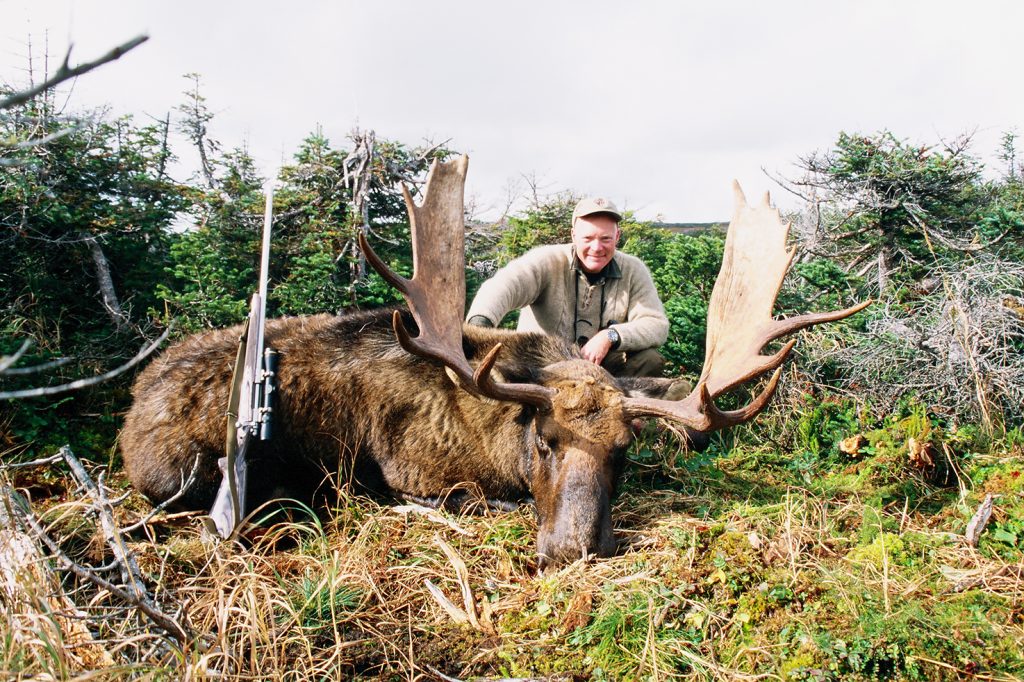
Rex Baker is one of the world’s greatest living hunters. He won the Weatherby award fifteen years before I did, and I didn’t think there was much out there that Rex hadn’t hunted. When he cooked this up, he didn’t quite have forty of his forty-four choices. One he was missing was a red brocket. I didn’t have one, either. Rex finally got his in March 2022; I got one a week later. For Rex and me, it was our fourth hunt for this pesky little deer. For Rex, this completed his own forty-animal quest.
As for me, I’m close. I never hunted barren ground grizzly or California bighorn. I was booked for Atlantic walrus in 2020, but it got Covid-cancelled, and I haven’t gotten it done yet. I also don’t have a wolverine. I’ve seen several, but never when the season was open. I have no idea how to hunt one on purpose.
Hey, forty distinct Norh American animals is hard! I thought that red brocket turned the trick, but I was wrong. In 1995, out of Yakutat, Alaska, on my third hunt for a glacier bear, I took a big, navy-blue bear. I believed it was of that color phase, turning dark with maturity. So, for twenty-seven years, I’ve given myself credit for having a glacier bear, but Rex’s committee rejected it as not light-colored enough. So, that challenge is still out there!
